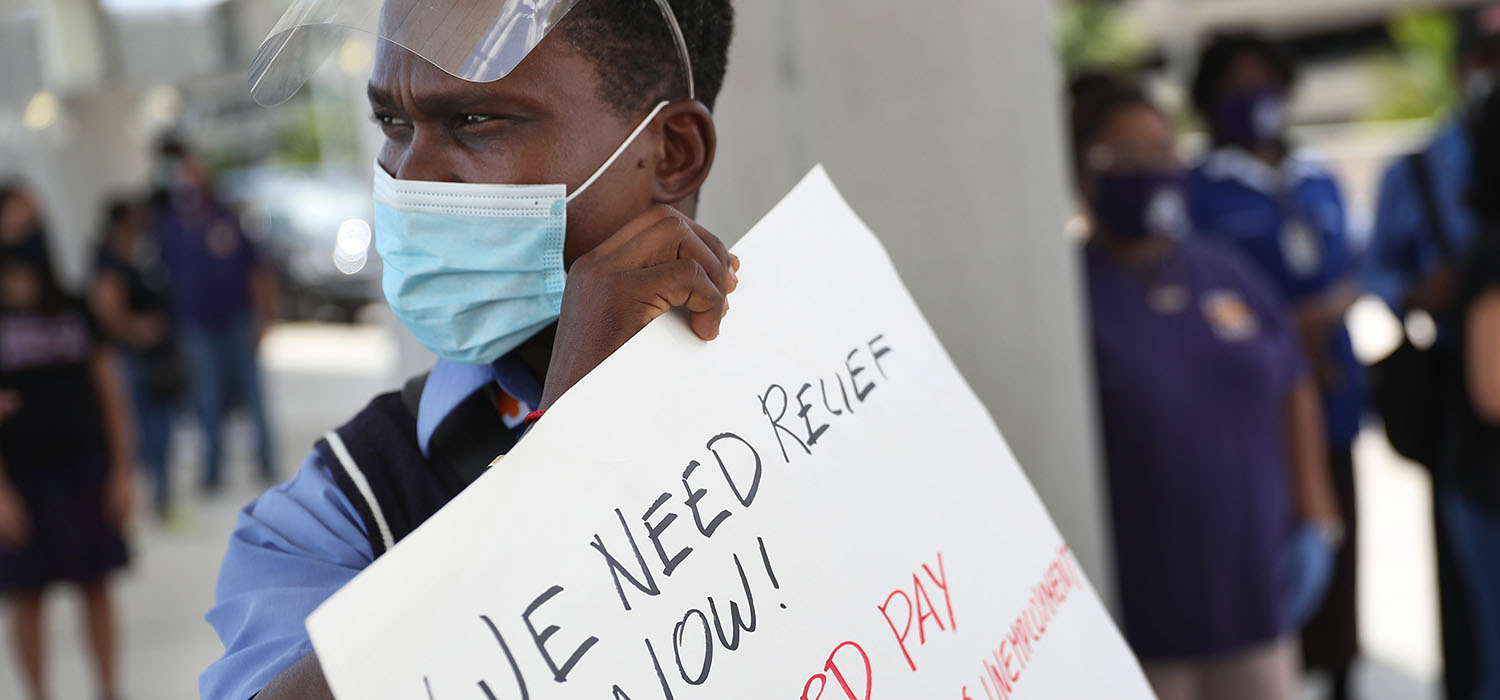
<p>Joe Raedle/Getty Images</p>
As Congress continues to debate additional economic relief measures in response to the coronavirus pandemic and associated economic fallout, student debt forgiveness has come up repeatedly. But student debt is neither the most common kind of debt nor the kind of debt likely to be held by the most vulnerable borrowers.
More households (about 60 percent) have credit card debt than other forms of debt. About a quarter have mortgages, and 12 percent have student debt. According to the Federal Reserve Bank of New York, 71 percent of the $14 trillion in outstanding consumer debt is in the form of mortgages or home equity loans. Student loan debt is the second largest component—11 percent, followed closely by auto loans at 9 percent. In other words, the biggest impact would come from addressing housing debt—an idea that did not gain much traction even during the 2008 housing crisis.

Congress might also want to target loan relief to financially vulnerable borrowers. In that case, forgiving auto debt, medical debt, or payday loans would be more effective than forgiving student debt, which is held disproportionately by higher-income households. A recent analysis by the New York Fed found that people who have debt but no mortgage or student loan debt are concentrated in neighborhoods that are low-income, majority Black, or majority Hispanic.
Almost one-third of auto loan dollars are issued to people with credit scores below 660, compared with just 7 percent of housing loans. Subprime auto loans with high interest rates create significant problems for vulnerable populations. About seven million Americans were at least three months behind on their car payments even before the recent surge in unemployment. If their cars are repossessed, many are likely to have difficulty getting to work or looking for a job and risk a downward spiral of financial problems.
Additionally, one quarter of adults ages 18 to 64—and 37 percent of those with household incomes under $40,000—report problems with medical debt (PDF). Those with a high school education or less are much more likely than college graduates to report this problem. Moreover, about 30 percent of those with medical debt have lost their jobs or had reduced earnings as a result of the illnesses leading to the debt. As is the case with student debt, medical debt is concentrated among younger adults, who are most likely to be uninsured, and among Black Americans, whose incomes and assets are considerably lower than the national averages.
Then there are payday loans. Twelve million American take out payday loans each year. These small loans help low-income households cover expenses like rent and utilities and are supposed to be repaid out of the next paycheck. But 80 percent of payday loans get rolled over. The average interest rate on the average payday loan is 391 percent.
So should student loans be first in line if the government wants to forgive some consumer debt, as opposed to just postponing payments on the debt?
Federal student loans are probably the only category of debt for which there is already a system in place to suspend payments when borrowers’ incomes will not support them. Under income-driven repayment plans, required payments are limited to an affordable share of income, and any remaining balances are forgiven after a specified number of years. Though this system is not well designed to provide immediate relief for large numbers of borrowers, once 2020 income is in the system, many borrowers will have lower payments. (And in the meantime, Congress has paused payments and interest on all federal student loans.)
Other kinds of debt don’t come with similar guardrails. Even if some landlords suspend rent payments during the crisis, tenants will presumably owe back rent when the lockdown is over. People with credit card debt will still have to make all those postponed payments. Many Americans are likely incurring credit card debt to pay for groceries if their incomes disappeared. How will they repay that debt? There is no income-driven repayment plan with loan forgiveness at the end for them.
It is difficult to justify picking student loans as the most problematic form of debt. Aside from being concentrated in the upper half of the income distribution, this debt represents borrowing for an investment that has, on average, a high expected payoff. Yet no one is suggesting paying off everyone’s mortgage debt—even though adequate housing is commonly viewed as a basic human right.
Borrowers with all kinds of debt need solutions. Practices such as garnishing social security payments and making it unusually difficult to discharge student loans in bankruptcy cause particular problems. But other problems are not specific to student debt. Harassment by loan servicers, failure to provide advice in the best interest of the borrowers, rigid payment requirements that cannot accommodate the changing circumstances of borrowers—all of these harm borrowers, and public policy can address them.
Relief for Americans struggling to make ends meet should be high on the public agenda, but mitigating these circumstances requires a broad perspective on the needs of all Americans—including those who have never been to college—not a narrow focus on an issue like student debt that affects a relatively small subset of those facing the most serious financial hardship.